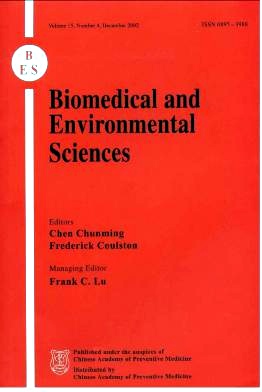A Nine-Year Prospective Study on the Incidence of Childhood Type 1 Diabetes Mellitus in China
-
Key words:
- Prospective Study /
- diabetes mellitus /
- ethnic groups /
- environmental factors /
- Preventive Medicine /
- correlation model /
- regression model /
- incidence rate /
- relative risk /
- South China /
- North China
Abstract: To investigate the epidemiological characteristics of childhood type 1 diabetes mellitus in China, newly diagnosed cases of type 1 diabetes with an onset age under 15 years were retrospectively registered by 23 local centers in China following a standardized protocal on the basis of the nationwide registry established by the WHO DiaMond Project China Participating Center, Chinese Academy of Preventive Medicine (CAPM). A population of about 24 million children were covered in the defined areas . A two-sample capture-recapture method was used to estimate case ascertainment. Between 1988 and 1996, 903 diabetic cases were registered in 9 ethnic groups. The overall ascertainment corrected incidence rate (IR) was 0.59 per 100 000 person-year. The IR was 0.52/100,000(95%CI:0.50~0.54)for males and 0.66/100,000(95%CI:0.64~0.68)for females. The standardized ascertainment corrected IR by the national age-specific population in 1990 was 0.57 per 100,000 person-year. The incidence among various ethnic groups ranged from 0.25/100,000 to 3.06/100,000. The IRs increased with northern latitude, and the IR of Han population was significantly higher in North China compared with South China (0.67 versus 0.53 per 100,000 respectively, P<0.01). A correlation model of incidence and calendar time showed that the IR increased significantly between 1988 and 1996 (r=0.86, P=0.0027). The relative risk (RR) of type 1 diabetes mellitus for different age-groups estimated by a Poisson regression model showed that taking RR as 1.00 for age-group from 0 to 4 years, the RR for age-group from 5 to 9 year and from 10 to 14 year was 2.30 and 3.60 respectively. The standardized ascertainment corrected IR of childhood type 1 diabetes mellitus in China is much lower than in other countries. The geographic and ethnic variability of the incidence suggests that both genetic and environmental factors play a role in the development of childhood diabetes in China.
| Citation: | LI XIN-HUA, LI TIAN-LIN, YANG Ze, LIU ZUN-YONG, WEI YI-DA, JIN SHU-XIANG, CHEN HONG, QIN RU-LI, LI Yan-qing, JANICE S.DORMAN, RONALD E.LAPORTE, WANG KE-AN. A Nine-Year Prospective Study on the Incidence of Childhood Type 1 Diabetes Mellitus in China[J]. Biomedical and Environmental Sciences, 2000, 13(4): 263-270. |







 Quick Links
Quick Links
 DownLoad:
DownLoad: